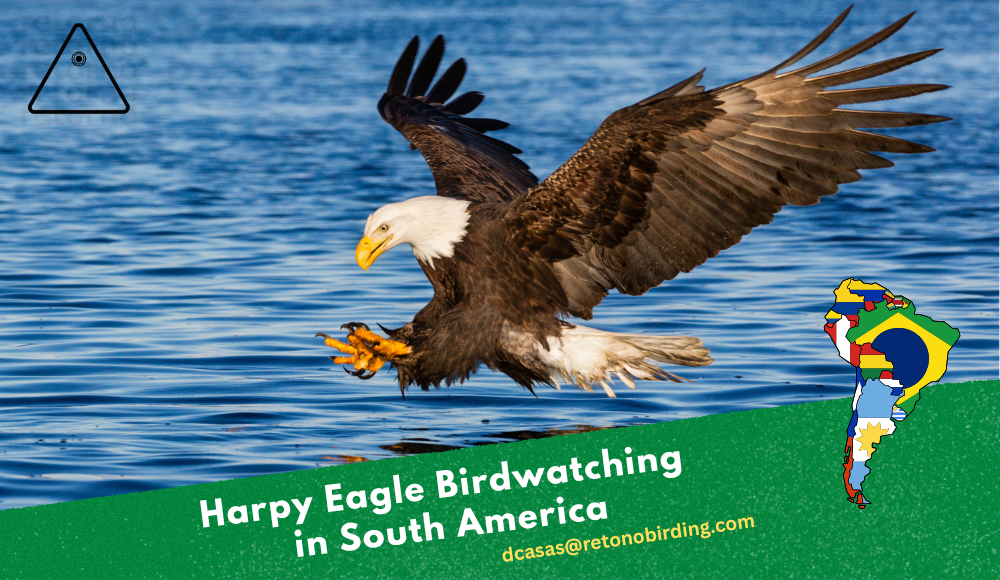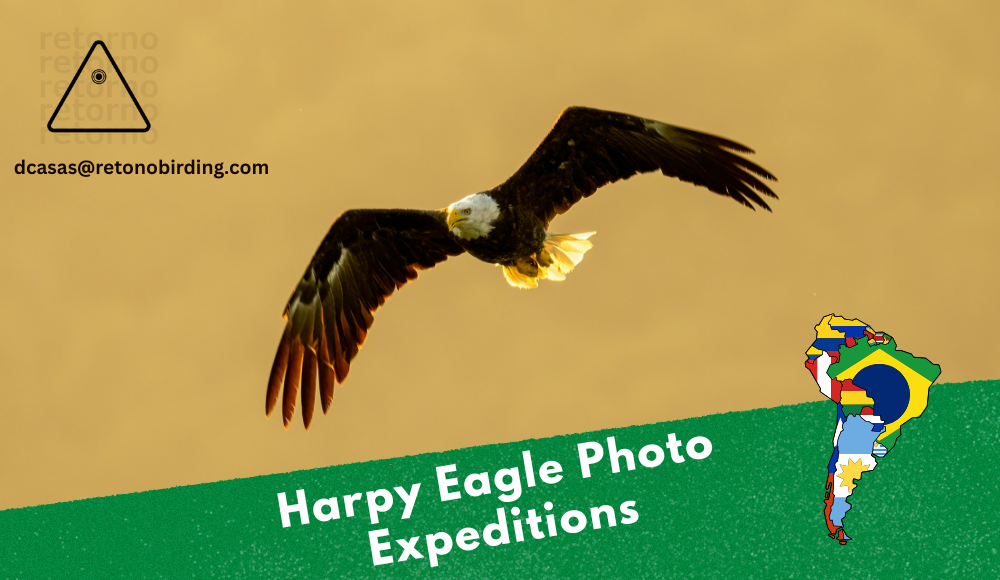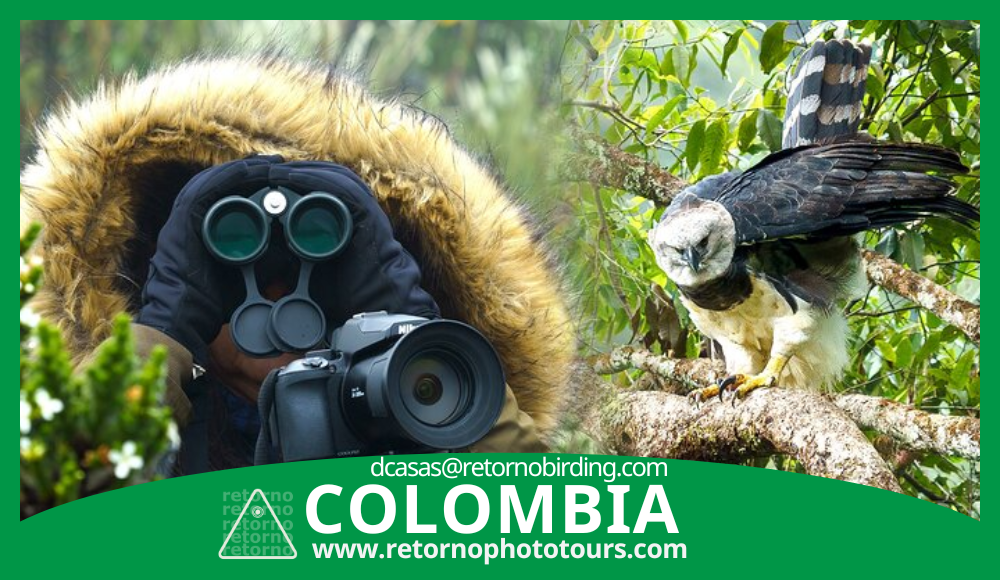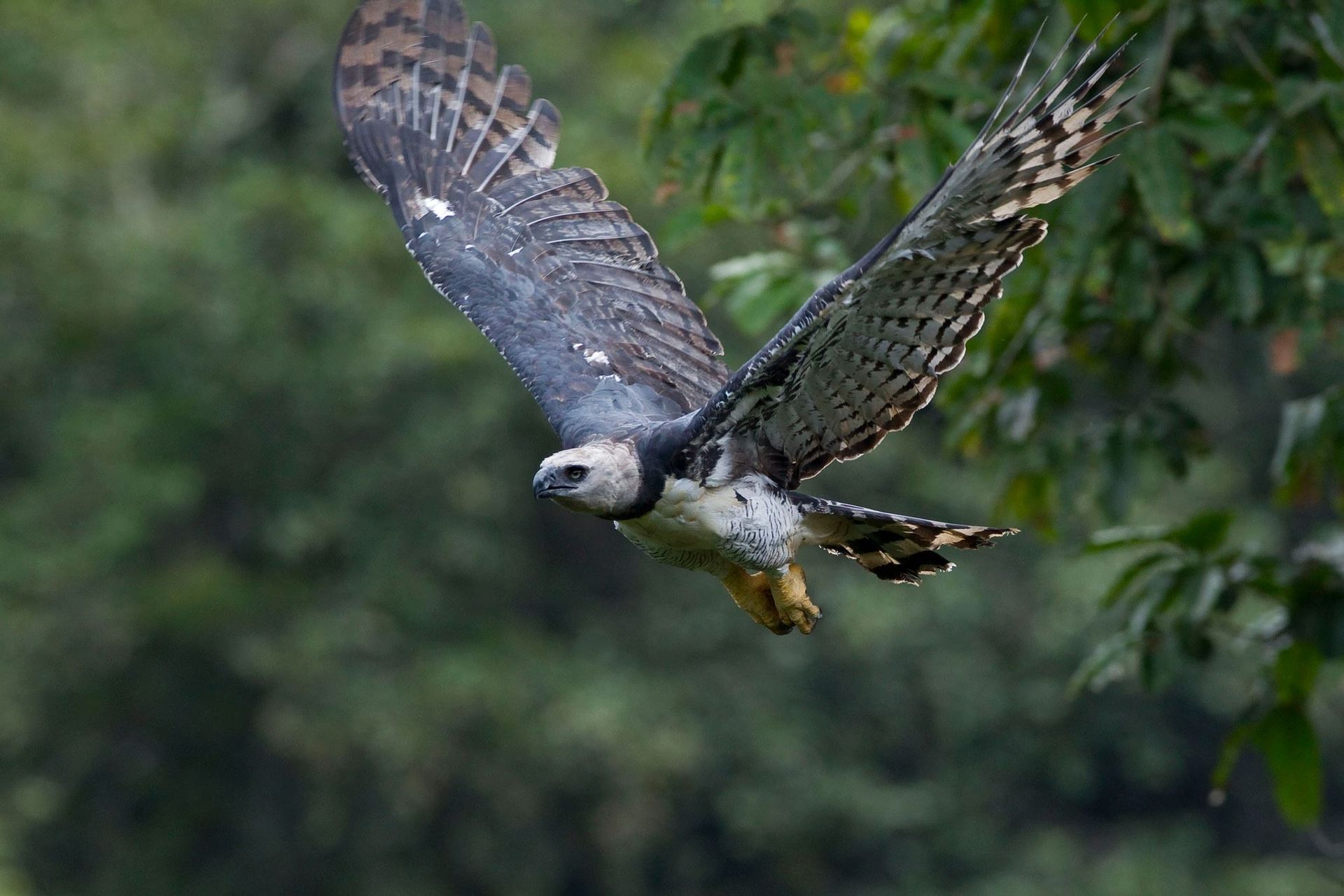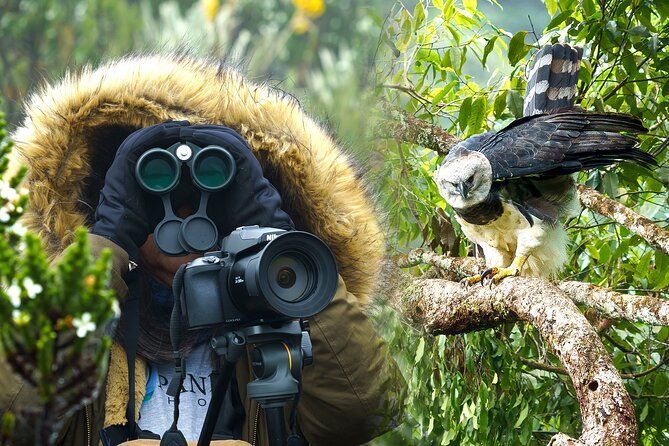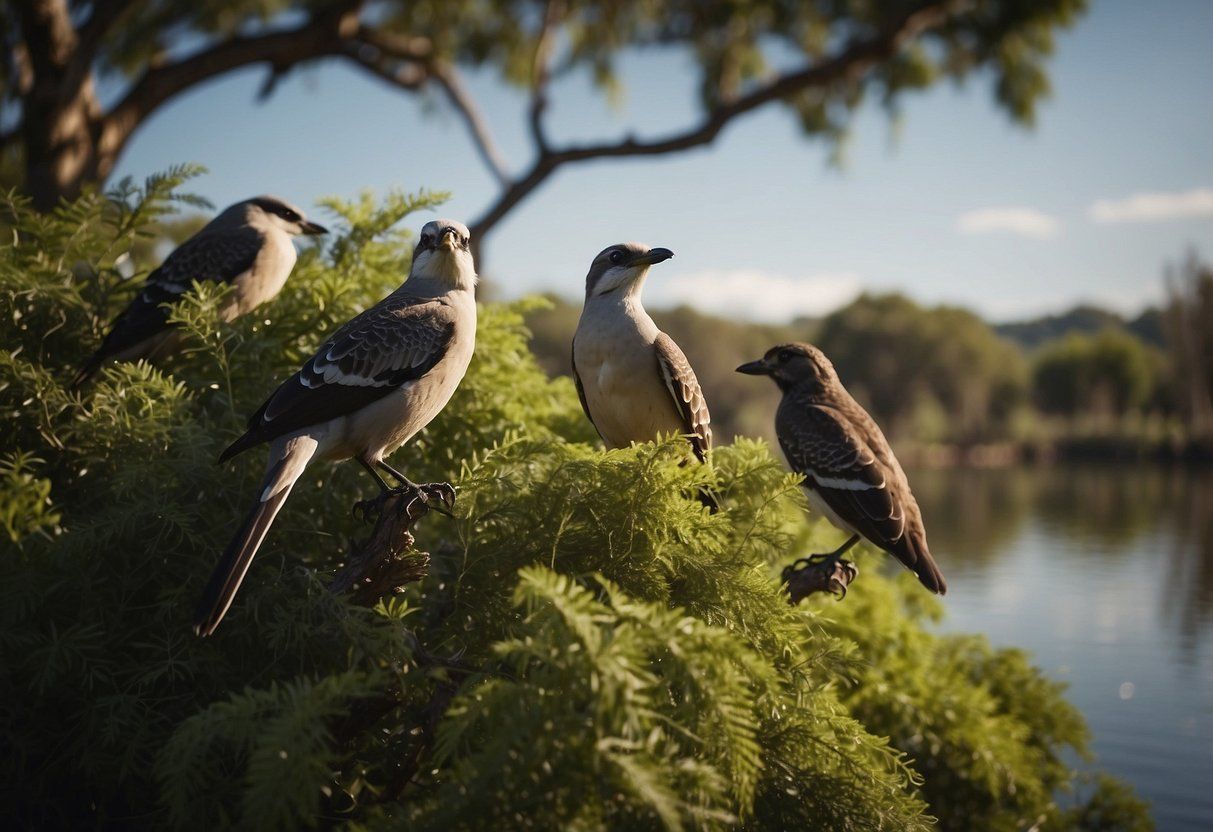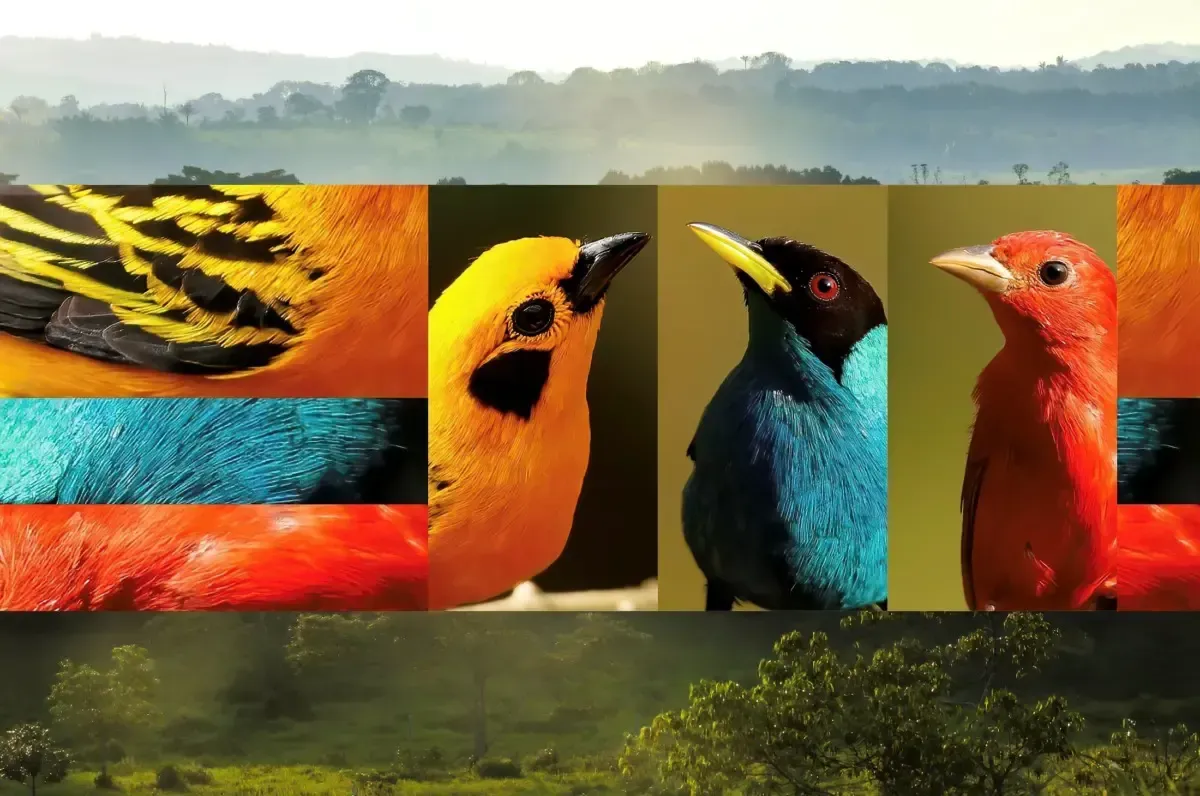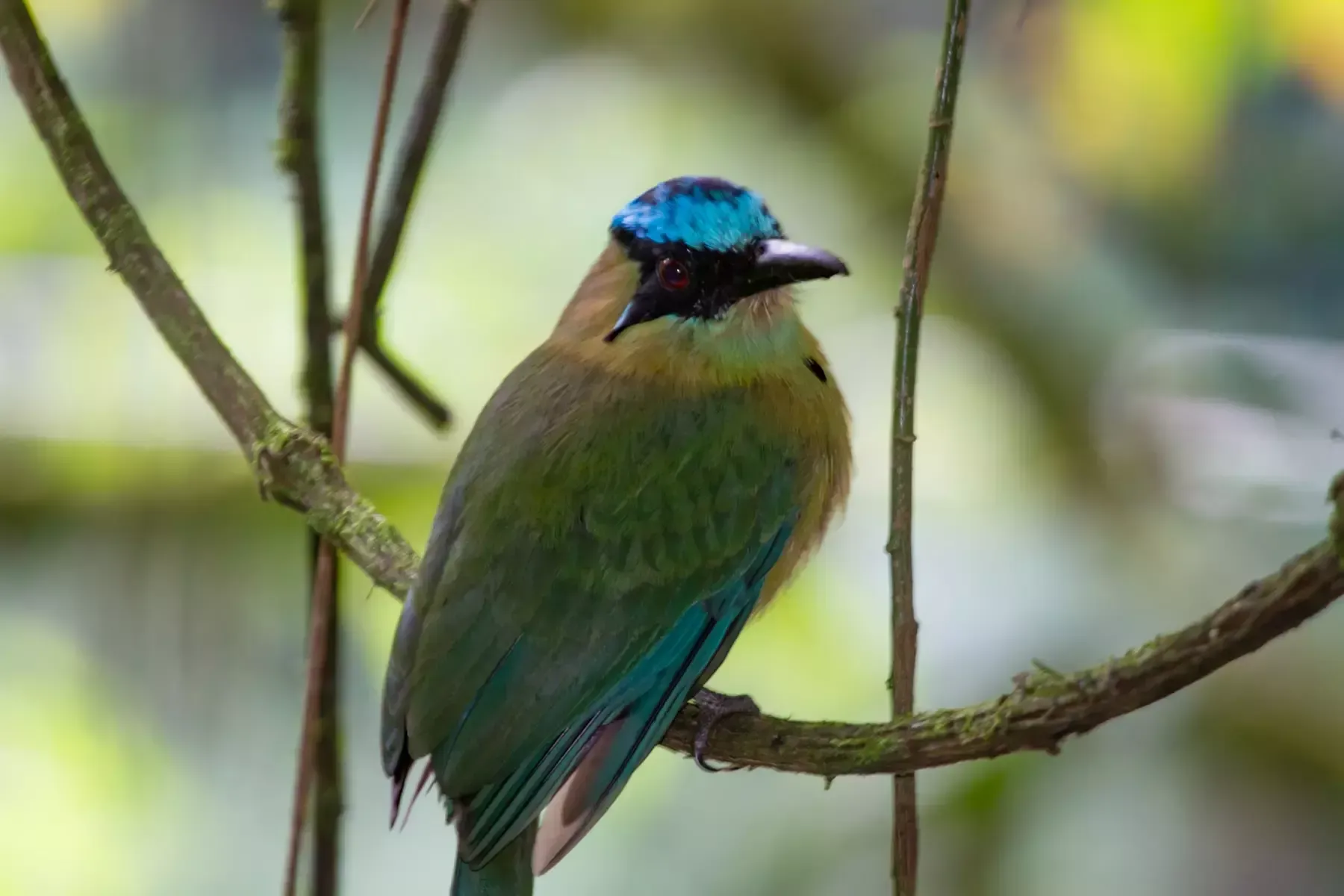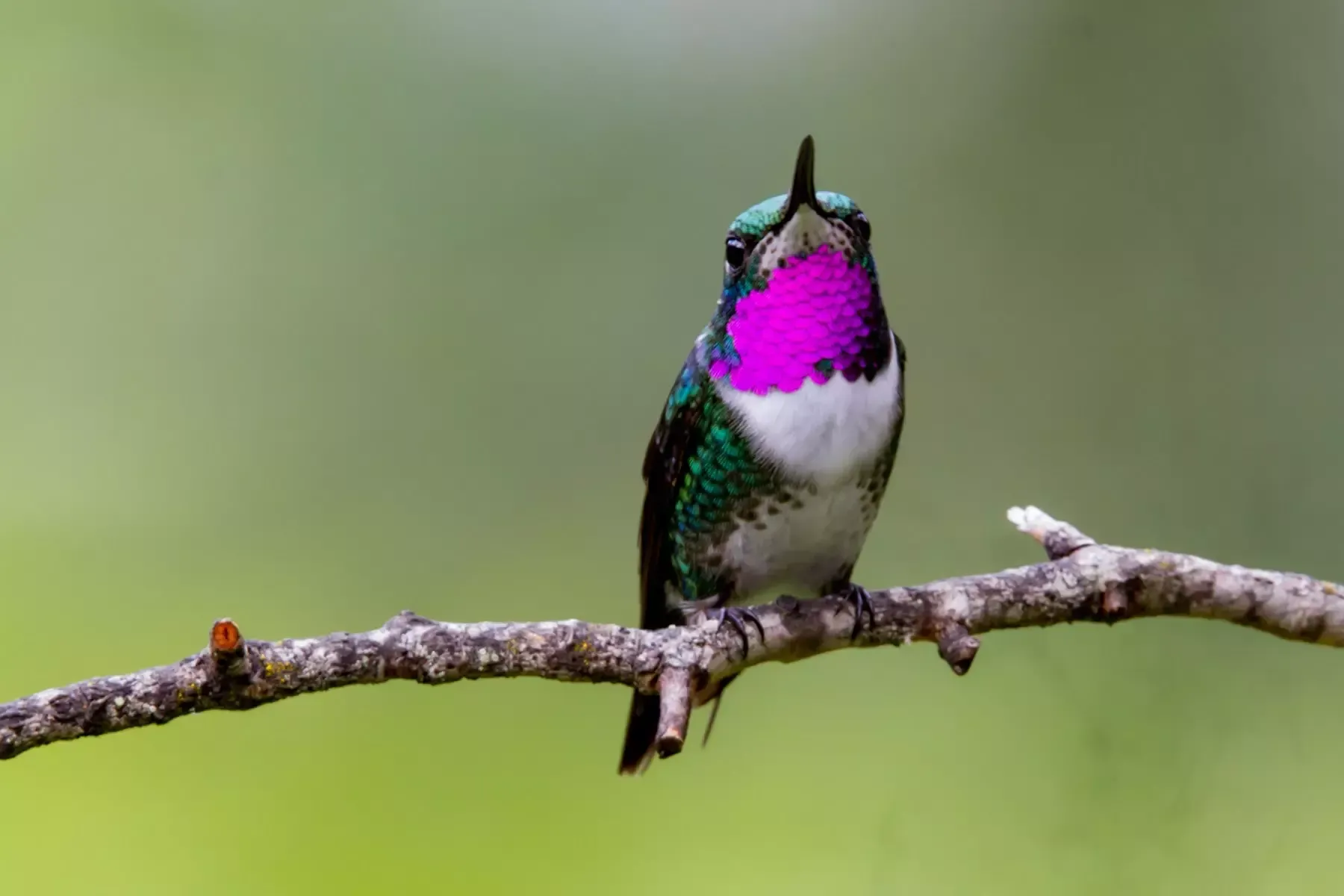Best Place to Photograph Harpy Eagles in South America: Season, Access, and Local Guides
Best Place to Photograph Harpy Eagles in South America: Season, Access, and Local Guides
South America holds some of the richest biodiversity on the planet, but even among its extraordinary wildlife, the Harpy Eagle stands apart. Towering, powerful, and impossibly elusive, it is a species that inspires awe in scientists, birders, and photographers alike. Capturing this apex raptor in its natural habitat is not simply another photography experience—it is one of the most extraordinary wildlife encounters available on Earth.
Across the continent, many birders dream of seeing a Harpy Eagle, but few know where to find reliable, safe, ethical, and photographically productive access. The reality is that Harpy Eagles inhabit dense tropical forests across several countries, yet only a handful of monitored sites provide the conditions necessary for proper observation. And today, one location stands above all others as the best place to photograph Harpy Eagles in South America—a place where the birds can be seen nesting, hunting, caring for their young, and interacting naturally without disturbance.
That place is the Harpy Eagle Natural Reserve, a destination that has recently opened access to a new nesting cycle, offering birders and photographers an opportunity found nowhere else in the world. With responsible viewing practices, expert guides, and an active nest currently in the incubation stage, this reserve has rapidly become the continent’s premier location for Harpy Eagle photography.
This article provides a complete guide to the best season for photographing Harpy Eagles, how to access the reserve, what to expect from each nesting stage, and why local guides are essential for a successful expedition. Whether you're planning a personal trip, joining a group photo expedition, or seeking the ultimate wildlife portfolio, this comprehensive guide will help you prepare.
The Best Season to Photograph Harpy Eagles in South America
Timing is everything when it comes to Harpy Eagle photography. While the species can be seen year-round in some locations, the most reliable and dramatic opportunities occur during the nesting cycle. This is when adults remain in a defined territory, hunting regularly, interacting more visibly, and returning frequently to the nest.
The Harpy Eagle Natural Reserve has documented a new active nest, and the entire cycle—from courtship to the juvenile’s independence—is now underway. Here is a detailed breakdown of each stage, and what photographers can expect.
Stage 1 — Courtship, Mating & Nest Building (August–October 2025)
Duration: 2–3 months
This stage is magical for behavioral photography. During courtship, the male and female communicate with low calls, aerial displays, and gentle interactions. The male brings prey as courtship gifts, a behavior rarely documented elsewhere.
Photographers can capture:
- Branch-building and nest construction
- Delivery of prey items
- Close bonding behavior between the pair
While the birds may be mobile during this phase, the chance to witness nest formation is unusually special.
Stage 2 — Incubation (November–December 2025)
Duration: ~62–64 days
We are presently in this stage.
This is one of the best times for photographers seeking clear and consistent sightings. The female spends nearly all her time at the nest protecting the egg, while the male provides food.
What makes Stage 2 particularly attractive:
- The female remains perched in view for long periods
- The male delivers prey regularly
- The nest is highly active but predictable
The reserve opened visitation starting November 1st, making this the prime moment to plan your trip.
Stage 3 — Hatching & Full-Time Parental Care (January–April 2026)
Duration: 4–5 months
This is the most emotional stage of the cycle. The chick hatches and becomes the center of the eagles’ universe. Both parents participate in feeding and protection, and their movements become highly photographed moments.
You may capture:
- Intimate feeding scenes
- Parents shading the chick from sun and rain
- Vocal communications between adults and chick
This period yields some of the most sought-after Harpy Eagle images in the world.
Stage 4 — Wandering Care & First Flights (June–September 2026)
Duration: 3–4 months
As the juvenile grows, it begins practicing wing movements, then attempts its first short flights—often clumsy, fascinating, and thrilling for observers.
Photographic highlights:
- Wing stretching and exercise
- Juvenile hopping between branches
- Early flight attempts
- Adults bringing larger prey
Few wildlife experiences compare to witnessing a young Harpy Eagle discovering the sky.
Stage 5 — Learning to Be an Eagle (December 2026 onward)
As the juvenile becomes more independent, it expands its range, practicing hunting skills and exploring its environment. While sightings may be less predictable, the bird is still within the territory, offering opportunities for environmental portraits and flight shots.
The Harpy Eagle Natural Reserve: The Most Reliable Location in South America
Across countries like Panama, Brazil, Ecuador, Peru, and Colombia, the Harpy Eagle remains extremely difficult to find. Territories cover vast areas of dense rainforest, and the species maintains one of the lowest population densities of any raptor. Sightings are rare, often accidental, and usually fleeting.
However, the Harpy Eagle Natural Reserve is different.
The reserve protects a known nesting territory and provides controlled access designed specifically for wildlife photographers. This combination—protection, monitoring, and ethical viewing—makes it the single best place in South America to photograph Harpy Eagles.
Why This Reserve Is Unique
- A monitored, active nest
The only reliable way to consistently observe Harpy Eagles is through a monitored territory. The current nest is accessible, visible, and located in habitat suitable for safe observation without disturbance. - Trained local guides
Experts who understand Harpy Eagle behavior ensure photographers arrive at the perfect timing for each type of activity—feeding, flights, parental exchanges, and more. - Ethical viewing platform
The reserve uses a no-disturbance approach. Photographers remain at safe distances and follow guidelines that protect the birds. - Rich surrounding wildlife
Beyond the Harpy Eagle, the reserve offers sightings of monkeys, mammals, colorful birds, and pristine rainforest landscapes. - Community involvement
The reserve contributes directly to local conservation efforts and creates sustainable economic incentives for local communities.
How to Access the Reserve
Accessing Harpy Eagle habitats is not easy, and that is precisely why photography opportunities are so valuable. Most Harpy Eagle territories are in remote and rugged areas, far from major cities.
The Harpy Eagle Natural Reserve solves this challenge by providing:
- Pre-arranged transport
- Field logistics
- Accommodation options
- Local support and expertise
- Safe trails and access points
Most visitors begin their journey in a major city, then travel into the region by road or river. Trips include pre-coordination with guides, ensuring timing matches the stage of the nesting cycle.
Because spots are limited and the cycle is active right now, early booking is strongly recommended.
Local Guides: The Key to Harpy Eagle Photography
The Harpy Eagle is not simply a rare bird—it is a deeply territorial apex predator that requires specialized knowledge to observe safely and respectfully.
Local guides play an essential role in:
Tracking Behavior
They monitor daily patterns, prey deliveries, adult movements, and changes at the nest.
Ensuring Photographer Safety
The rainforest environment can be challenging. Having guides prevents navigation risks and ensures a smooth experience.
Positioning for Light & Angles
Experts know the best hours for photography based on sunlight, perch orientation, and expected activity.
Conservation Ethics
Guides enforce no-disturbance rules to protect the nest and avoid stress to adults or chicks.
Without guides, finding a Harpy Eagle is nearly impossible. With them, your chances increase from a fraction of a percent to nearly guaranteed.
Additional Wildlife You May Photograph
The reserve is not only about Harpy Eagles. Because the habitat is pristine, photographers often encounter:
- Howler monkeys
- Spider monkeys
- Spectacled owls
- Toucans
- Forest falcons
- Tanagers
- River mammals
- And an extraordinary diversity of insects and reptiles
Many photographers leave with an entire wildlife portfolio beyond the Harpy Eagle.
Why Retorno Photo Tours Offers the Best Harpy Eagle Experience
Retorno works directly with local experts, supports community conservation, and provides professional-level photographic guidance. The company specializes in real wildlife encounters—not staged, not artificial, and never intrusive.
What sets Retorno apart:
- Access to the best Harpy Eagle territory in South America
- Deep partnership with local guides who monitor the nest daily
- Safety-first logistics
- Ethical wildlife tourism
- Professional photography leadership
- Small groups for ideal shooting conditions
Whether you're a beginner or a seasoned wildlife photographer, Retorno ensures that your experience is smooth, ethical, productive, and unforgettable.
Final Thoughts
If you want to witness the Harpy Eagle during its active nesting cycle—courtship, incubation, feeding, first flights, and beyond—this is your moment. The season is open, and the activity is already underway. Opportunities like this appear only once every several years.
For full tour details, itinerary options, and upcoming dates, visit our Harpy Eagle Photography Tour with Retorno—your gateway to the best Harpy Eagle experience in all of South America.
👉
Join the ultimate Harpy Eagle Photography Tour with Retorno Photo Tours


